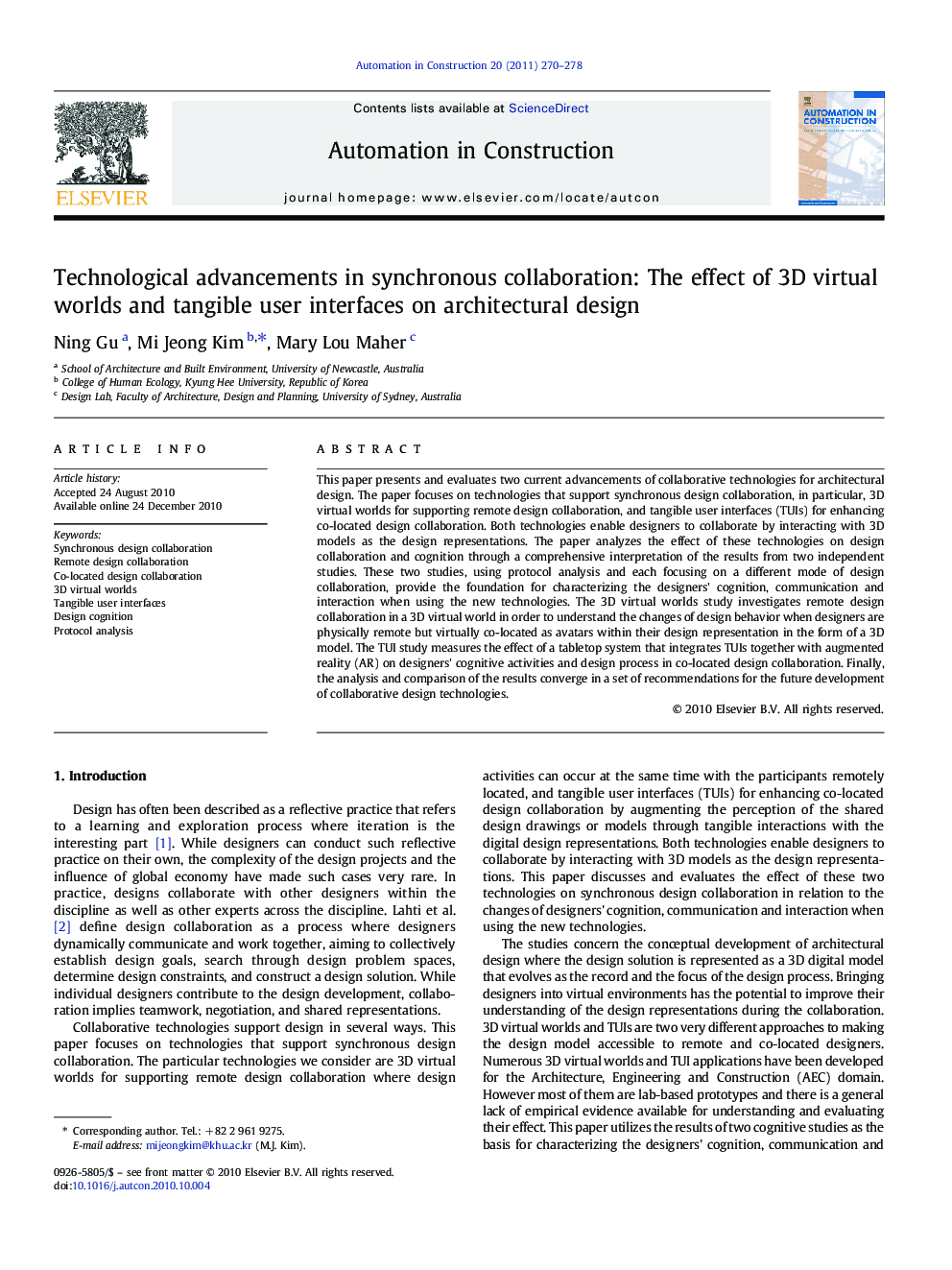| کد مقاله | کد نشریه | سال انتشار | مقاله انگلیسی | نسخه تمام متن |
|---|---|---|---|---|
| 247086 | 502403 | 2011 | 9 صفحه PDF | دانلود رایگان |

This paper presents and evaluates two current advancements of collaborative technologies for architectural design. The paper focuses on technologies that support synchronous design collaboration, in particular, 3D virtual worlds for supporting remote design collaboration, and tangible user interfaces (TUIs) for enhancing co-located design collaboration. Both technologies enable designers to collaborate by interacting with 3D models as the design representations. The paper analyzes the effect of these technologies on design collaboration and cognition through a comprehensive interpretation of the results from two independent studies. These two studies, using protocol analysis and each focusing on a different mode of design collaboration, provide the foundation for characterizing the designers' cognition, communication and interaction when using the new technologies. The 3D virtual worlds study investigates remote design collaboration in a 3D virtual world in order to understand the changes of design behavior when designers are physically remote but virtually co-located as avatars within their design representation in the form of a 3D model. The TUI study measures the effect of a tabletop system that integrates TUIs together with augmented reality (AR) on designers' cognitive activities and design process in co-located design collaboration. Finally, the analysis and comparison of the results converge in a set of recommendations for the future development of collaborative design technologies.
Research highlights
► This research analyzes the effect of two collaborative technologies, 3D virtual worlds and tangible user interfaces, on design collaboration and cognition using protocol analysis.
► Two studies focusing remote and co-located design collaboration provide the foundation for characterizing the designers’ cognition, communication and interaction when using the new technologies.
► This research makes a set of recommendations for the future development of collaborative design technologies based on the analysis and comparison of the results.
Journal: Automation in Construction - Volume 20, Issue 3, May 2011, Pages 270–278